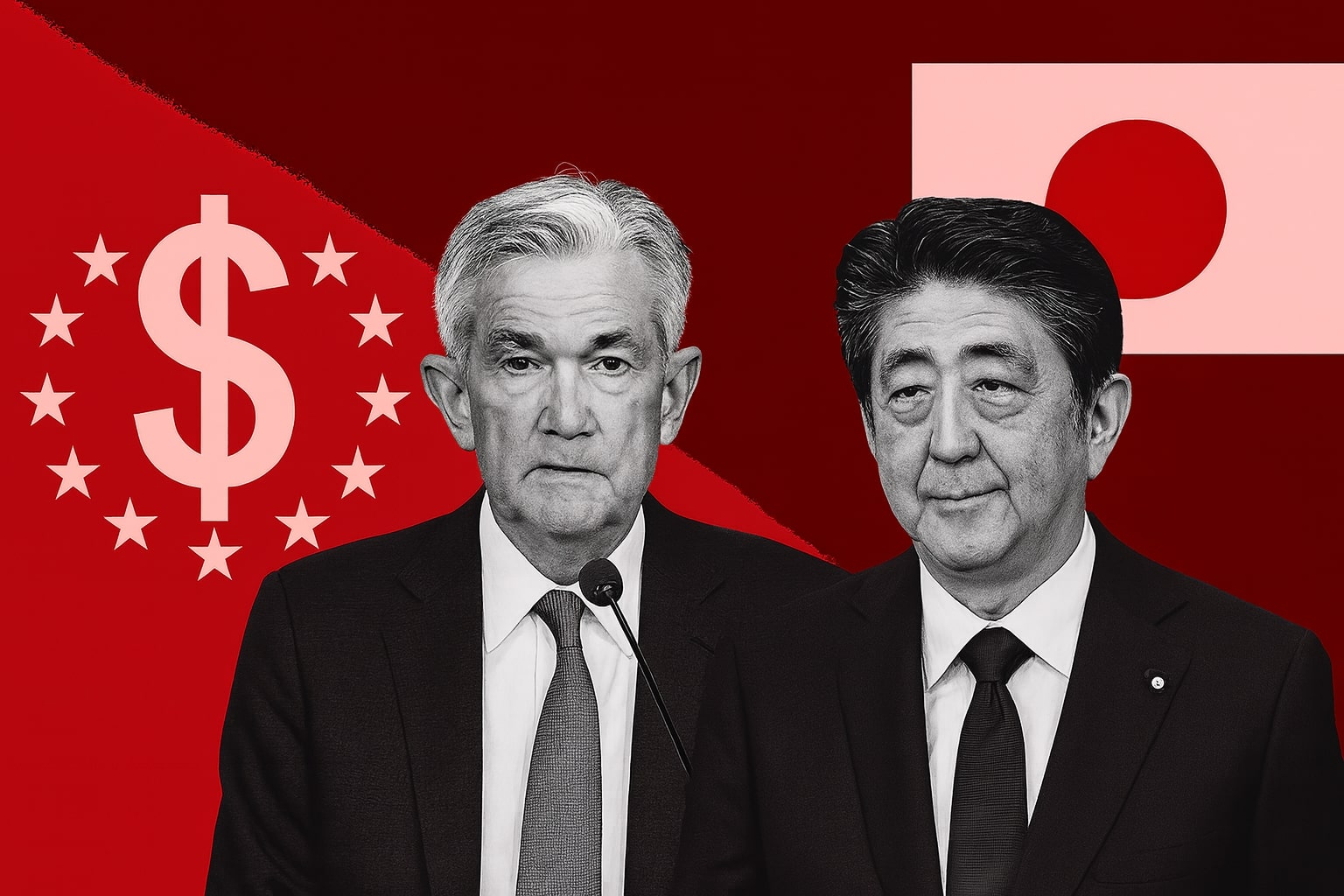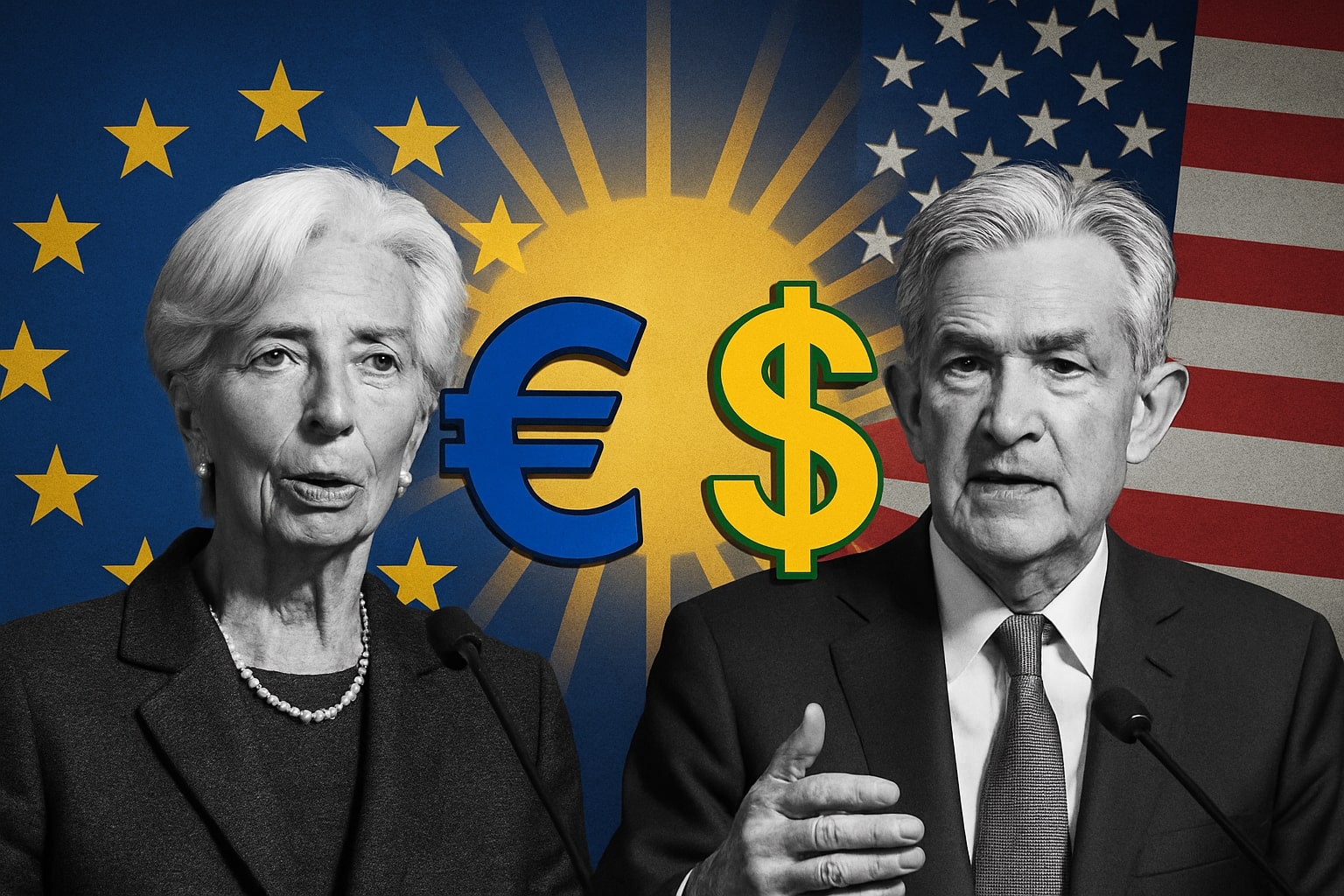
EUR/USD Price Forecast - EURO to Dollar Drops Toward 1.1675 as Strong U.S. Data and Trump Tariffs Drive Dollar Higher
Euro slides after U.S. GDP at 3.8%, jobless claims hit 218K, durable orders rise 2.9%. PCE inflation at 2.7% leaves Fed cautious, while technicals show 1.1650 support in play and downside risk to 1.1610–1.1575 | That's TradingNEWS
EUR/USD Struggles Near 1.1675 as U.S. Data Boosts Dollar Strength
The EUR/USD pair is pinned close to three-week lows, trading around 1.1675 after bouncing from intraday lows of 1.1645. The euro has lost about 0.55% this week, pressured by a run of upbeat U.S. economic releases that have reinforced the dollar’s dominance. Revised second-quarter U.S. GDP showed a 3.8% annualized expansion, stronger than the 3.3% previously reported, driven largely by resilient consumer spending. At the same time, durable goods orders jumped 2.9% in August following two months of declines, while initial jobless claims fell to 218,000, their lowest since July, signaling ongoing labor market strength. These figures prompted markets to trim bets on deep Federal Reserve easing and lifted the dollar index back above 98.20, the highest in three weeks.
Trump’s Tariff Announcements Deepen Euro Weakness Against USD
Alongside strong U.S. data, fresh trade measures from President Trump have added to euro selling pressure. Washington announced new tariffs of 100% on branded medicines, 25% on heavy trucks, and 50% on kitchen cabinets, reigniting concerns of a broader trade war. The move spurred risk aversion during Asian trading hours and supported flows into the U.S. dollar, leaving EUR/USD struggling to regain ground above 1.1690. Markets remain cautious that tariff escalation could weigh on global growth while reinforcing dollar demand as a safe-haven play.
Inflation Data Shapes Fed Policy Expectations
The Federal Reserve’s preferred inflation measure, the PCE Price Index, rose 0.3% MoM in August, pushing the yearly pace to 2.7% from 2.6%. The core PCE held steady at 2.9% YoY, matching consensus. These readings confirm inflation progress is slowing but not collapsing, giving the Fed little room to ease aggressively. Market pricing via the CME FedWatch tool now implies an 87% probability of an October cut, down from above 90% earlier this week, with odds for a 50-bp move shrinking to 62% from nearly 80%.
Technical Landscape: EUR/USD Faces Key Support at 1.1650
Chart structure shows EUR/USD validated a bearish shift after breaking below its short-term uptrend line. Momentum indicators remain in negative territory, with RSI hovering near 31, close to oversold but still allowing further downside. Key support sits at 1.1650, which held both on Thursday and earlier in September. A decisive break beneath this zone would expose 1.1610 and the late-August low at 1.1575. On the topside, resistance is lined up near 1.1725, followed by 1.1755 and the September highs at 1.1820. Unless the euro reclaims the 200-day EMA around 1.1710, the bias remains tilted lower.
Consumer Sentiment and Fed Commentary Awaited
Beyond PCE, traders are watching the University of Michigan sentiment index and remarks from Fed Governor Bowman for further guidance. Earlier Fed speeches showed mixed views: some officials like Kansas City’s Jeffrey Schmid pushed for more cuts to protect jobs, while Chicago’s Austan Goolsbee warned against premature easing given persistent inflation. This divergence has left EUR/USD vulnerable to every data point, with sentiment swings exaggerated by thin positioning.
Read More
-
GPIX ETF At $52.52: 8% Yield And Dynamic S&P 500 Income Upside
13.12.2025 · TradingNEWS ArchiveStocks
-
XRP ETFs Surge Toward $1B As XRPI Hits $11.64 And XRPR $16.48 With XRP Near $2
13.12.2025 · TradingNEWS ArchiveCrypto
-
Natural Gas Price Forecast: NG=F Hovers Near $4.07 Support After 22% Weekly Slide
13.12.2025 · TradingNEWS ArchiveCommodities
-
USD/JPY Price Forecast - Dollar to Yen at 154–158 Range as BoJ 0.75% Hike and Fed Cut Debate
13.12.2025 · TradingNEWS ArchiveForex
Macro Backdrop: Europe’s Underperformance vs. U.S. Resilience
While U.S. data underscore economic resilience, Europe has struggled to provide bullish surprises. Eurozone growth indicators remain subdued, and inflation progress has been uneven, leaving the ECB with limited ammunition compared to the Fed’s flexibility. This divergence explains why rallies in EUR/USD above 1.1700 have repeatedly faded in recent weeks. The euro’s comparative underperformance against other majors is visible in the daily heatmap, where EUR showed only slight strength versus the New Zealand dollar but remained weak against the U.S. dollar.
Market Call on EUR/USD
At current levels near 1.1675, the euro is boxed in between firm U.S. economic momentum, tariff-driven risk aversion, and sticky inflation that keeps the Fed cautious. Technicals point to further downside if 1.1650 gives way, targeting 1.1610 and possibly 1.1575. A sustained break above 1.1725 would be needed to flip sentiment. Given the strength of the U.S. backdrop and euro underperformance, the bias remains bearish, and EUR/USD is a Sell into weakness, with traders watching whether the 1.1630–1.1650 floor can survive another test.



















